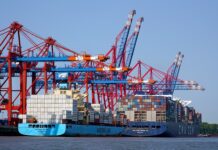
Disruption: it’s the death knell for enterprises averse to change but the sweet capriccio of opportunity for visionary, built-to-last companies. This is largely because the technology-driven disruption that has created the current market conditions thrives on agility and a willingness to change.
Generally, large companies are averse to change, and instead focus on stability and efficiency. This may be beneficial to shareholders in the near- and intermediate-term, but does not always translate into sustained market leadership. Organizations that embrace the disruption, on the other hand, can deliver new innovative solutions to open new markets and create new business models, while outpacing the slow-to-adopt companies reluctant to transformation. There has never been a better time for innovation with disruption occurring in every vertical. Savvy, change agent-minded executives will be able to take advantage of this opportunity.
Bursting with Disruption
No one now questions the idea that the Internet was a revolutionary breakthrough, but in its earliest days, it was a government-backed project initially limited to university chatter. Now, the Internet has a strong impact on how we buy our groceries, how we tell people about ourselves, the type of job we get, and how we make business and personal decisions. The Internet is one only example of disruption—technology-driven upheaval is occurring in all verticals.

McKinsey noted that there are 12 key areas that are experiencing a seismic shift in traditional approaches; every industry is affected by disruption, from manufacturing, pharmaceutical, healthcare, automotive, telecommunications, oil and gas, utilities, government to retail. The primary drivers of this type of change are intelligent software systems (artificial intelligence and machine learning), the Internet of Things, cloud computing, advanced robotics, autonomous vehicles, next-generation genomics, energy storage, 3D printing, advanced materials, advanced oil and gas exploration and recovery, and renewable energy. Enterprises and multinationals with a strong vision can tap into these technologies to support growth into new businesses, while also defending their market share in their current product categories with value-added offerings.

For instance, intelligent systems are expected to take a $5.6 trillion bite out of the pie, displacing over 110-140 million knowledge workers (such as lawyers, clerks, and programmers). Most of these disruptions will be driven by the use of data analytics and neural networks to unearth predictive and prescriptive insights and to enable intelligent automation. Healthcare will receive a boost through the enhanced technologies that target and predict disease. Lawyers will benefit from deep learning systems that assist with contracts and research. More companies are turning to intelligent AI-based systems to assist with manufacturing, operations, supply chain, marketing, sales, and financial analysis.
The Internet of Things (IoT) is having a broad, sustained impact on analytics and decision support. Estimates put IoT in a growth range of about $2.7-6.2 trillion by 2025, and much of this value will be derived from the optimization of current processes. IoT is already making its mark on the energy sector, where companies like Exelon are investing in smart grids and installing smart meters in customers’ homes and businesses. Industrial IoT is influencing manufacturing, asset management, employee safety, product development, and the creation of new business models and value-added services.

Robots are fundamentally altering how we approach tedious, difficult, or dangerous activities. Forrester noted that 7% of all US jobs will be replaced by robotic workers, and advanced robotic technologies are expected to alter the market to the tune of $1.7-4.5 trillion by 2025. Robotic surgeons are assisting with difficult operations and their use, in some cases, improves patient outcomes and lowers the rate of infections. Wounded vets can take advantage of new, enhanced prosthetics that operate more naturally. Augmenting the human body allows for robotic strength to combine with a nimble human intelligence to lift and manipulate heavy loads.

Autonomous vehicles are expected to be worth $.2-1.9 trillion by 2025. Part of the promise of autonomous vehicles is that they will be safer than their human-operated counterparts, resulting in fewer accidents and lives lost due to vehicular accidents. Autonomous trucks will decrease the amount of time and money it takes to deliver goods. Insurance companies, car dealers, car rental agencies, and shipping and logistics companies will all need to incorporate and adjust to the disruption coming from autonomous vehicles that do not require a human operator.
Stay True to Your Vision
The opportunity to take advantage of disruptive technologies isn’t strictly only for startups. Large enterprises and multinationals with the fortitude to stay true to their vision will amplify their company’s vision by leveraging these emerging technologies to leapfrog and in some cases displace their competition. In an Inc interview, Alibaba founder Jack Ma highlighted the strength of his company’s vision: “I believe in one thing: global vision, local win. Our focus is on helping small and medium-size companies make money.” This vision is what turned Alibaba into a global giant.

Amazon’s vision statement of “To be Earth’s most customer-centric company, where customers can find and discover anything they might want to buy online” has embolden the organization to become a leader in human computer interface through Amazon Alexa API services, the market leader in cloud computing, and an innovator in logistics and transportation with their Amazon Prime Air supported by delivery drones.

By staying true to the company vision, enterprises can capitalize on technology-driven disruption to crush their rivals while bringing new innovative products and services to the market.


















